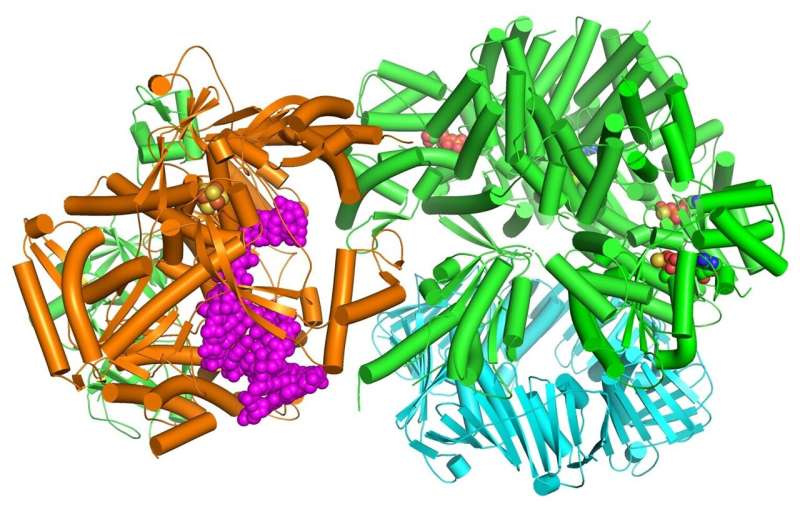This article has been reviewed according to Science X's editorial process and policies. Editors have highlighted the following attributes while ensuring the content's credibility:
fact-checked
peer-reviewed publication
trusted source
proofread
When it comes to DNA replication, humans and baker's yeast are more alike than different, scientists discover

Humans and baker's yeast have more in common than meets the eye, including an important mechanism that helps ensure DNA is copied correctly, reports a pair of studies published in the journals Science and Proceedings of the National Academy of Sciences.
The findings visualize for the first time a molecular complex—called CTF18-RFC in humans and Ctf18-RFC in yeast—that loads a "clamp" onto DNA to keep parts of the replication machinery from falling off the DNA strand.
It is the latest discovery from longtime collaborators Huilin Li, Ph.D., of Van Andel Institute, and Michael O'Donnell, Ph.D., of The Rockefeller University, to shed light on the intricate mechanisms that enable the faithful passage of genetic information from generation to generation of cells.
"The accurate copying of DNA is fundamental to the propagation of life," Li said. "Our findings add key pieces to the puzzle of DNA replication and could improve understanding of DNA replication-related health conditions."
DNA replication is a tightly controlled process that copies the genetic code, allowing its instructions to be conveyed from one generation of cells to the next. In diseases like cancer, these mechanisms can fail, leading to uncontrolled or faulty replication with devastating consequences.
To date, at least 40 diseases, including many cancers and rare disorders, have been linked to problems with DNA replication.
The process begins by unzipping DNA's ladder-like structure, resulting in two strands called the leading and lagging strands. A molecular construction crew then assembles the missing halves of the strands, turning a single DNA helix into two. Much of this work falls to enzymes called polymerases, which assemble the building blocks of DNA.
On their own, however, polymerases aren't good at staying on the DNA strand. They require CTF18-RFC in humans and Ctf18-RFC in yeast to thread a ring-shaped clamp onto the DNA leading strand, and another clamp loader called RFC in both human and yeast to thread the clamp onto the lagging strand. The clamp then closes and signals to the polymerases that they can begin replicating DNA.
Using high-powered cryo-electron microscopes, Li, O'Donnell and their teams revealed previously unknown facets of the leading strand clamp loaders' structures, including a "hook" that forces the leading strand polymerase to let go of the new DNA strand so it can be recognized by the clamp loader.
This distinction represents a key difference between the functions of the leading strand clamp loader (CTF18-RFC) and the lagging strand clamp loader (RFC) and illuminates an important aspect of varying DNA duplication mechanisms on the leading and lagging strands.
Lastly, the study identified shared features between the yeast and human leading strand clamp loaders, which demonstrate an evolutionary link between the two. This finding underscores the value of yeast as powerful yet simple models for studying genetics.
More information: Zuanning Yuan et al, Mechanism of PCNA loading by Ctf18-RFC for leading-strand DNA synthesis, Science (2024). DOI: 10.1126/science.adk5901. www.science.org/doi/10.1126/science.adk5901
Qing He et al, Cryo-EM reveals a nearly complete PCNA loading process and unique features of the human alternative clamp loader CTF18-RFC, Proceedings of the National Academy of Sciences (2024). DOI: 10.1073/pnas.2319727121
Journal information: Science , Proceedings of the National Academy of Sciences
Provided by Van Andel Research Institute




















